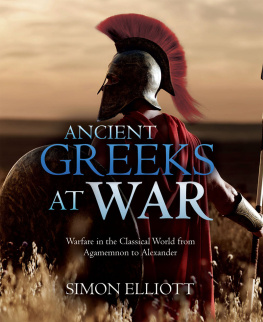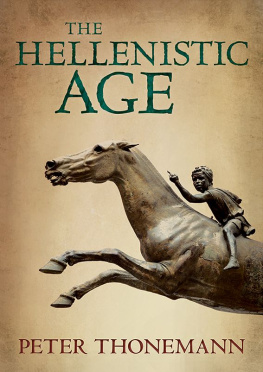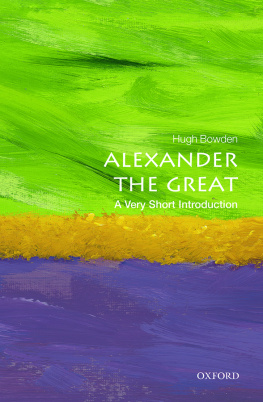ACKNOWLEDGMENTS
The book in which I first read about Ai Khanoum was a childhood gift from my grandparents, but my interest in Hellenistic Bactria began in earnest when I was an undergraduate in the library of St Catherines College, Cambridge, when I should have been writing an essay on something else. Sir William Woodthorpe Tarns The Greeks in Bactria and India had a title too intriguing and downright bizarre to possibly be ignored. It also left me with more questions than I could even begin to know how to go about answering.
Dorothy J. Thompson has been a supervisor and mentor without equal throughout my vacillations between Egypt and Central Asia. I owe her an immense debt for showing me how one can think critically and creatively about language and identity. Parts of this book originated in a PhD thesis under her supervision at the University of Cambridge.
The Hellenistic Far East does not have any real disciplinary home, but I have been grateful for the welcome given me by various centers of classics, oriental studies, and archaeology, as well as the institutions where I have worked over the past few years. The academic communities of the Institute for the Study of the Ancient World (ISAW), New York University; Merton College, University of Oxford; the Joukowsky Institute for Archaeology and the Ancient World, Brown University; and the Department of Classics, University of Reading, have all provided financial support and terrific opportunities to share and discover new research. My students at Brown gave me the chance to actually teach Central Asian archaeology for the first time. Sren Stark and Lillian Tseng kindly allowed me to participate in their seminar on Cultural Interactions in Eurasian Art and Archaeology at ISAW and to learn more about the archaeology of Central Asian nomads. Raymond J. Mairs provided an architects perspective on Ai Khanoum. Participants at numerous conferences over the years have also given me food for thought and have let me test the principle that you can only know if your ideas are actually crazy once youve said them aloud in front of a large, imposing audience.
Thanks also go to everyone who has contributed to my Hellenistic Far East Bibliography, named individually in the acknowledgements to Mairs 2011b and subsequent updates. I will continue to update the bibliography regularly at www.bactria.org (through which I occasionally get requests for logistical support in Afghanistan because of confusion with a similarly named website).
Lynne Rouse gave me the opportunity to excavate and conduct research in Turkmenistan, which was supported by a grant from the British Academy. Carol Mairs, Central Asian traveling companion extraordinaire, put up with the highs (Samarkand), the lows (Konye Urgench), and all the plov a person could reasonably eat.
Frank L. Holt and Matthew Canepa offered superb critique and advice in the preparation of this manuscript, for which I am very grateful indeed. Paul Bernard and Nicholas Sims-Williams provided kind assistance with the Sphytos inscription and the Bactrian documentary texts. At University of California Press, Eric Schmidt, Maeve Cornell-Taylor, and Cindy Fulton have been supportive and astute editors, and Paul Psoinos an exemplary copy editor.
Thanks for everything must go to my family.
A NOTE ON ABBREVIATIONS
For epigraphical publications, the abbreviations used in the notes to this volume follow those appearing in the frontmatter lists of Simon Hornblower and Anthony Spawforth, eds., The Oxford Classical Dictionary, 3rd edition, revised (Oxford, 2003), and H. G. Liddell, Robert Scott, et al., eds., A Greek-English Lexicon, 9th edition, with supplement (Oxford, 1968); those for papyri are as given in the Checklist of Greek, Latin, Demotic and Coptic Papyri, Ostraca and Tablets, available online at http://library.duke.edu/rubenstein/scriptorium/papyrus/texts/clist.html.
MAP 1. The Hellenistic World.
MAP 2. Hellenistic Bactria.
MAP 3. Ai Khanoum city plan.
Introduction
Coins with Indian inscriptions.
Those of the most powerful monarchs,
of Evoukratindaza, of Stratasa,
of Menandraza, of Heramaaza.
Thats how the scholarly book conveys to us
the Indian writing on one side of the coins.
But the book shows us the other side as well,
that is, moreover, the right side,
with the figure of the king. And how quickly he stops there,
how a Hellene is moved as he reads the Greek,



















